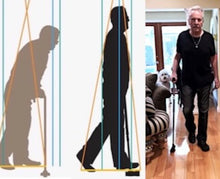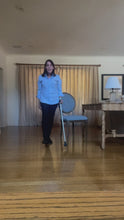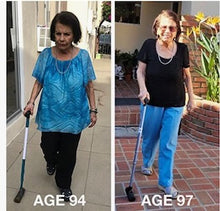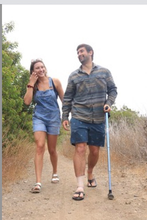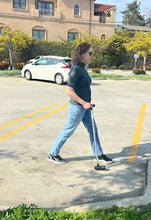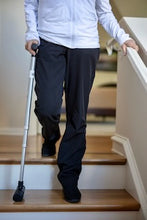
The 3rd Foot Cane
Customer Review
Customer Update
How To Use & Adjust The 3rd Foot Cane
Upright Posture Balance And Stability Without Leaning On A Cane Handle

The 3rd Foot FabricTopped Crutch
Contact Customer Support For Ordering Information
The 3rd Foot Spring Assisted, Articulating Crutch Foot Is Designed And Patented In United States, Canada And China To Move, Pivot And Maintain Balance, Upright Posture And The Body's Natural Alignment Like A Foot When Walking, Stepping Backward And Turning.
The Top Of The Crutch Is Made Of Soft Washable Body Contouring Fabric. There Is No Metal Or Plastic At The Top Of The 3rd Foot Crutch.
Aligned As Designed Is a CTIP Portfolio Member.
How To Use The 3rd Foot Cane Handle

How To Use

How Not To Use!

Comfortable Grip
Ergonomic Design
The 3rd Foot Cane Handle Is Ergonomically Shaped To Rest Comfortably In A Small Or Big Hand. Latex Free.
The Bottom Of The 3rd Foot Cane Foot Is Designed With SureGrip™ Support Technology

The 3rd Foot Cane
order now
Free US Domestic Shipping
Shipping Times Vary Based On Location. Priority Shipping Available At Check-Out For An Additional Charge.
Canadian Duty Charges are Included in the DHL Shipping Fee.
International Shipping Charge Calculated At Checkout. International Shipping And Any Duty or Import Fees Are The Responsibility Of The Customer.
Shipping Weight: 2 pounds Including Shipping Box & Packaging For Domestic and International Orders. Shipping Box Dimensions For North America, Hawaii & International Orders 30.5" x 6.25” x 2.2"
Specs: Cane Weight: 20 Ounces Without The Cane Strap. Wrist Strap And Instructions Included
Cane Height Adjustable From 28 to 39 Inches Or For People From 4' 11" To 6' 3" Tall Using A 39" Cane.
Direct Access To Product Support Specialists Through eMail, Phone and Zoom
30 Day Return Policy
30 Day Return Policy Including Paid Return Shipping For All Orders Inside The Continental United States. No Restocking Fee.
Any Cane Damaged In Transit To The Customer Will Be Replaced At No Charge To The Customer And A Return Label Will Be Issued To Return The Damaged Cane.
International Return Shipping And Any Additional Taxes Or Fees Are The Responsibility Of The Customer.
Canes That Are Returned Outside Of The 30 Day Return Period Will Receive A Partial Or No Refund.
Canes That Are Damaged Or Altered After Delivery Are Not Returnable.
The 3rd Foot Cane Is ONLY Sold At alignedasdesigned.com And Amazon





